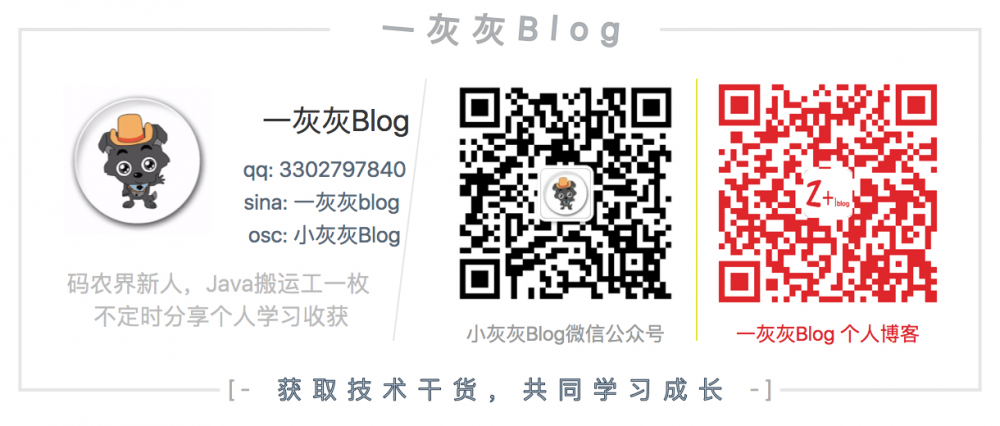190824-SpringBoot系列教程web篇之Get请求参数解析姿势汇总
一般在开发web应用的时候,如果提供http接口,最常见的http请求方式为GET/POST,我们知道这两种请求方式的一个显著区别是GET请求的参数在url中,而post请求可以不在url中;那么一个SpringBoot搭建的web应用可以如何解析发起的http请求参数呢?
下面我们将结合实例汇总一下GET请求参数的几种常见的解析姿势
I. 环境搭建
首先得搭建一个web应用才有可能继续后续的测试,借助SpringBoot搭建一个web应用属于比较简单的活;
创建一个maven项目,pom文件如下
<parent>
<groupId>org.springframework.boot</groupId>
<artifactId>spring-boot-starter-parent</artifactId>
<version>2.1.7</version>
<relativePath/> <!-- lookup parent from update -->
</parent>
<properties>
<project.build.sourceEncoding>UTF-8</project.build.sourceEncoding>
<project.reporting.outputEncoding>UTF-8</project.reporting.outputEncoding>
<spring-cloud.version>Finchley.RELEASE</spring-cloud.version>
<java.version>1.8</java.version>
</properties>
<dependencies>
<dependency>
<groupId>org.springframework.boot</groupId>
<artifactId>spring-boot-starter-web</artifactId>
</dependency>
</dependencies>
<build>
<pluginManagement>
<plugins>
<plugin>
<groupId>org.springframework.boot</groupId>
<artifactId>spring-boot-maven-plugin</artifactId>
</plugin>
</plugins>
</pluginManagement>
</build>
<repositories>
<repository>
<id>spring-milestones</id>
<name>Spring Milestones</name>
<url>https://repo.spring.io/milestone</url>
<snapshots>
<enabled>false</enabled>
</snapshots>
</repository>
</repositories>
添加项目启动类 Application.cass
@SpringBootApplication
public class Application {
public static void main(String[] args) {
SpringApplication.run(Application.class);
}
}
在演示请求参数的解析实例中,我们使用终端的curl命令来发起http请求(主要原因是截图上传太麻烦,还是终端的文本输出比较方便;缺点是不太直观)
II. GET请求参数解析
接下来我们正式进入参数解析的妖娆姿势篇,会介绍一下常见的一些case(并不能说包含了所有的使用case)
下面所有的方法都放在 ParamGetRest 这个Controller中
@RestController
@RequestMapping(path = "get")
public class ParamGetRest {
}
1. HttpServletRequest
直接使用 HttpServletRequest 来获取请求参数,属于比较原始,但是灵活性最高的使用方法了。
常规使用姿势是方法的请求参数中有一个 HttpServletRequest ,我们通过 ServletRequest#getParameter(参数名) 来获取具体的请求参数,下面演示返回所有请求参数的case
@GetMapping(path = "req")
public String requestParam(HttpServletRequest httpRequest) {
Map<String, String[]> ans = httpRequest.getParameterMap();
return JSON.toJSONString(ans);
}
测试case,注意下使用curl请求参数中有中文时,进行了url编码(后续会针对这个问题进行说明)
➜ ~ curl 'http://127.0.0.1:8080/get/req?name=yihuihiu&age=19'
{"name":["yihuihiu"],"age":["19"]}% ➜ ~ curl 'http://127.0.0.1:8080/get/req?name=%E4%B8%80%E7%81%B0%E7%81%B0&age=19'
{"name":["一灰灰"],"age":["19"]}%
使用HttpServletRequest获取请求参数,还有另外一种使用case,不通过参数传递的方式获取Request实例,而是借助 RequestContextHolder ;这样的一个好处就是,假设我们想写一个AOP,拦截GET请求并输出请求参数时,可以通过下面这种方式来处理
@GetMapping(path = "req2")
public String requestParam2() {
HttpServletRequest request =
((ServletRequestAttributes) RequestContextHolder.currentRequestAttributes()).getRequest();
String name = request.getParameter("name");
return "param Name=" + name;
}
测试case
➜ ~ curl 'http://127.0.0.1:8080/get/req2?name=%E4%B8%80%E7%81%B0%E7%81%B0&age=19' param Name=一灰灰%
2. 方法参数
这种解析方式比较厉害了,将GET参数与方法的参数根据参数名进行映射,从感官上来看,就像是直接调用这个一样
@GetMapping(path = "arg")
public String argParam(String name, Integer age) {
return "name: " + name + " age: " + age;
}
针对上面提供的方式,我们的测试自然会区分为下面几种,看下会怎样
- 正好两个参数,与定义一直
- 缺少一个请求参数
- 多一个请求参数
- 参数类型不一致
# 参数解析正常 ➜ ~ curl 'http://127.0.0.1:8080/get/arg?name=%E4%B8%80%E7%81%B0%E7%81%B0&age=19' name: 一灰灰 age: 19% # 缺少一个参数时,为null ➜ ~ curl 'http://127.0.0.1:8080/get/arg?name=%E4%B8%80%E7%81%B0%E7%81%B0' name: 一灰灰 age: null% # 多了一个参数,无法被解析 ➜ ~ curl 'http://127.0.0.1:8080/get/arg?name=%E4%B8%80%E7%81%B0%E7%81%B0&age=19&id=10' name: 一灰灰 age: 19% # 类型不一致,500 ➜ ~ curl 'http://127.0.0.1:8080/get/arg?name=%E4%B8%80%E7%81%B0%E7%81%B0&age=haha' -i HTTP/1.1 500 Content-Length: 0 Date: Sat, 24 Aug 2019 01:45:14 GMT Connection: close
从上面实际的case可以看出,利用方法参数解析GET传参时,实际效果是:
- 方法参数与GET传参,通过参数签名进行绑定
- 方法参数类型,需要与接收的GET传参类型一致
- 方法参数非基本类型时,若传参没有,则为null;(也就是说如果为基本类型,无法转null,抛异常)
- 实际的GET传参可以多于方法定义的参数
接下来给一个数组传参解析的实例
@GetMapping(path = "arg2")
public String argParam2(String[] names, int size) {
return "name: " + (names != null ? Arrays.asList(names) : "null") + " size: " + size;
}
测试case如下,传数组时参数值用逗号分隔;基本类型,必须传参,否则解析异常
➜ ~ curl 'http://127.0.0.1:8080/get/arg2?name=yihui,erhui&size=2' name: null size: 2% ➜ ~ curl 'http://127.0.0.1:8080/get/arg2?name=yihui,erhui' -i HTTP/1.1 500 Content-Length: 0 Date: Sat, 24 Aug 2019 01:53:30 GMT Connection: close
3. RequestParam 注解
这种方式看起来和前面有些相似,但更加灵活,我们先看一下注解
@Target(ElementType.PARAMETER)
@Retention(RetentionPolicy.RUNTIME)
@Documented
public @interface RequestParam {
// 指定请求参数名
String value() default "";
// 指定请求参数名
String name() default "";
// true表示发起请求时这个参数必须存在
boolean required() default true;
String defaultValue() default ValueConstants.DEFAULT_NONE;
}
有两个参数需要注意,一个是name表示这个参数与GET传参的哪个关联;required表示这个参数是否可选
下面是一个简单的使用方式
@GetMapping(path = "ano")
public String anoParam(@RequestParam(name = "name") String uname,
@RequestParam(name = "age", required = false) Integer age,
@RequestParam(name = "uids", required = false) Integer[] uids) {
return "name: " + uname + " age: " + age + " uids: " + (uids != null ? Arrays.asList(uids) : "null");
}
测试如下:
# 三个参数全在 ➜ ~ curl 'http://localhost:8080/get/ano?name=%E4%B8%80%E7%81%B0%E7%81%B0blog&age=18&uids=1,3,4' name: 一灰灰blog age: 18 uids: [1, 3, 4]% # age不传 ➜ ~ curl 'http://localhost:8080/get/ano?name=%E4%B8%80%E7%81%B0%E7%81%B0blog&uids=1,3,4' name: 一灰灰blog age: null uids: [1, 3, 4]% # 必选参数name不传时 ➜ ~ curl 'http://localhost:8080/get/ano?uids=1,3,4' -i HTTP/1.1 500 Content-Length: 0 Date: Sat, 24 Aug 2019 13:09:07 GMT Connection: close
使用 RequestParam 注解时,如果指定了 name/value ,这个参数就与指定的GETGET传参关联;如果不指定时,则根据参数签名来关联
下面给出两个更有意思的使用方式,一个是枚举参数解析,一个是Map容纳参数,一个是数组参数解析
public enum TYPE {
A, B, C;
}
@GetMapping(path = "enum")
public String enumParam(TYPE type) {
return type.name();
}
@GetMapping(path = "enum2")
public String enumParam2(@RequestParam TYPE type) {
return type.name();
}
@GetMapping(path = "mapper")
public String mapperParam(@RequestParam Map<String, Object> params) {
return params.toString();
}
// 注意下面这个写法,无法正常获取请求参数,这里用来对比列出
@GetMapping(path = "mapper2")
public String mapperParam2(Map<String, Object> params) {
return params.toString();
}
@GetMapping(path = "ano1")
public String anoParam1(@RequestParam(name = "names") List<String> names) {
return "name: " + names;
}
// 注意下面这个写法无法正常解析数组
@GetMapping(path = "arg3")
public String anoParam2(List<String> names) {
return "names: " + names;
}
测试case如下
➜ ~ curl 'http://localhost:8080/get/enum?type=A'
A%
➜ ~ curl 'http://localhost:8080/get/enum2?type=A'
A%
➜ ~ curl 'http://localhost:8080/get/mapper?type=A&age=3'
{type=A, age=3}%
➜ ~ curl 'http://localhost:8080/get/mapper2?type=A&age=3'
{}%
➜ ~ curl 'http://localhost:8080/get/ano1?names=yi,hui,ha'
name: [yi, hui, ha]%
➜ ~ curl 'http://localhost:8080/get/arg3?names=yi,hui,ha' -i
HTTP/1.1 500
Content-Length: 0
Date: Sat, 24 Aug 2019 13:50:55 GMT
Connection: close
从测试结果可以知道:
enum.valueOf() @RequestParam @RequestParam
4. PathVariable
从请求的url路径中解析参数,使用方法和前面的差别不大
@GetMapping(path = "url/{name}/{index}")
public String urlParam(@PathVariable(name = "name") String name,
@PathVariable(name = "index", required = false) Integer index) {
return "name: " + name + " index: " + index;
}
上面是一个常见的使用方式,对此我们带着几个疑问设计case
- 只有name没有index,会怎样?
- 有name,有index,后面还有路径,会怎样?
➜ ~ curl http://127.0.0.1:8080/get/url/yihhuihui/1 name: yihhuihui index: 1% ➜ ~ curl 'http://127.0.0.1:8080/get/url/yihhuihui' -i HTTP/1.1 500 Content-Length: 0 Date: Sat, 24 Aug 2019 13:27:08 GMT Connection: close ➜ ~ curl 'http://127.0.0.1:8080/get/url/yihhuihui/1/test' -i HTTP/1.1 500 Content-Length: 0 Date: Sat, 24 Aug 2019 13:27:12 GMT Connection: close
从path中获取参数时,对url有相对严格的要求,注意使用
5. POJO
这种case,我个人用得比较多,特别是基于SpringCloud的生态下,借助Feign来调用第三方微服务,可以说是很舒爽了;下面看一下这种方式的使用姿势
首先定义一个POJO
@Data
public class BaseReqDO implements Serializable {
private static final long serialVersionUID = 8706843673978981262L;
private String name;
private Integer age;
private List<Integer> uIds;
}
提供一个服务
@GetMapping(path = "bean")
public String beanParam(BaseReqDO req) {
return req.toString();
}
POJO中定义了三个参数,我们再测试的时候,看一下这些参数是否必选
# GET传参与POJO中成员名进行关联 ➜ ~ curl 'http://127.0.0.1:8080/get/bean?name=yihuihui&age=18&uIds=1,3,4' BaseReqDO(name=yihuihui, age=18, uIds=[1, 3, 4])% # 没有传参的属性为null;因此如果POJO中成员为基本类型,则参数必传 ➜ ~ curl 'http://127.0.0.1:8080/get/bean?name=yihuihui&age=18' BaseReqDO(name=yihuihui, age=18, uIds=null)%
II. 其他
0. 项目
- 工程: https://github.com/liuyueyi/spring-boot-demo
- 项目: https://github.com/liuyueyi/spring-boot-demo/blob/master/spring-boot/202-web-params
1. 一灰灰Blog
尽信书则不如,以上内容,纯属一家之言,因个人能力有限,难免有疏漏和错误之处,如发现bug或者有更好的建议,欢迎批评指正,不吝感激
下面一灰灰的个人博客,记录所有学习和工作中的博文,欢迎大家前去逛逛
- 一灰灰Blog个人博客 https://blog.hhui.top
- 一灰灰Blog-Spring专题博客 http://spring.hhui.top

打赏 如果觉得我的文章对您有帮助,请随意打赏。
- 本文标签: git GitHub REST http IO zab spring servlet UI list src plugin Feign pom map value build mapper springcloud cat json Connection bean bug maven tar 实例 final constant springboot 测试 Document 开发 文章 id 2019 web js 解析 dependencies ACE Master GMT update https App 参数 博客 AOP 微服务 java
- 版权声明: 本文为互联网转载文章,出处已在文章中说明(部分除外)。如果侵权,请联系本站长删除,谢谢。
- 本文海报: 生成海报一 生成海报二











![[HBLOG]公众号](https://www.liuhaihua.cn/img/qrcode_gzh.jpg)

